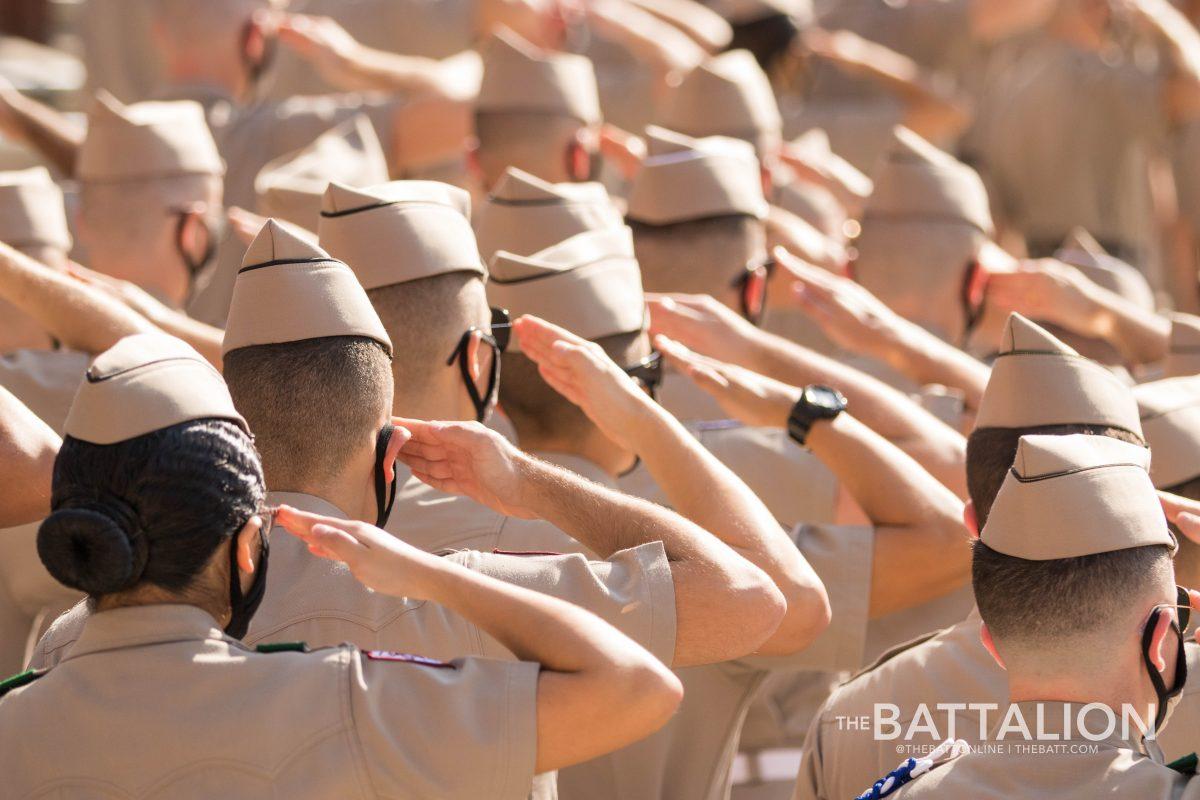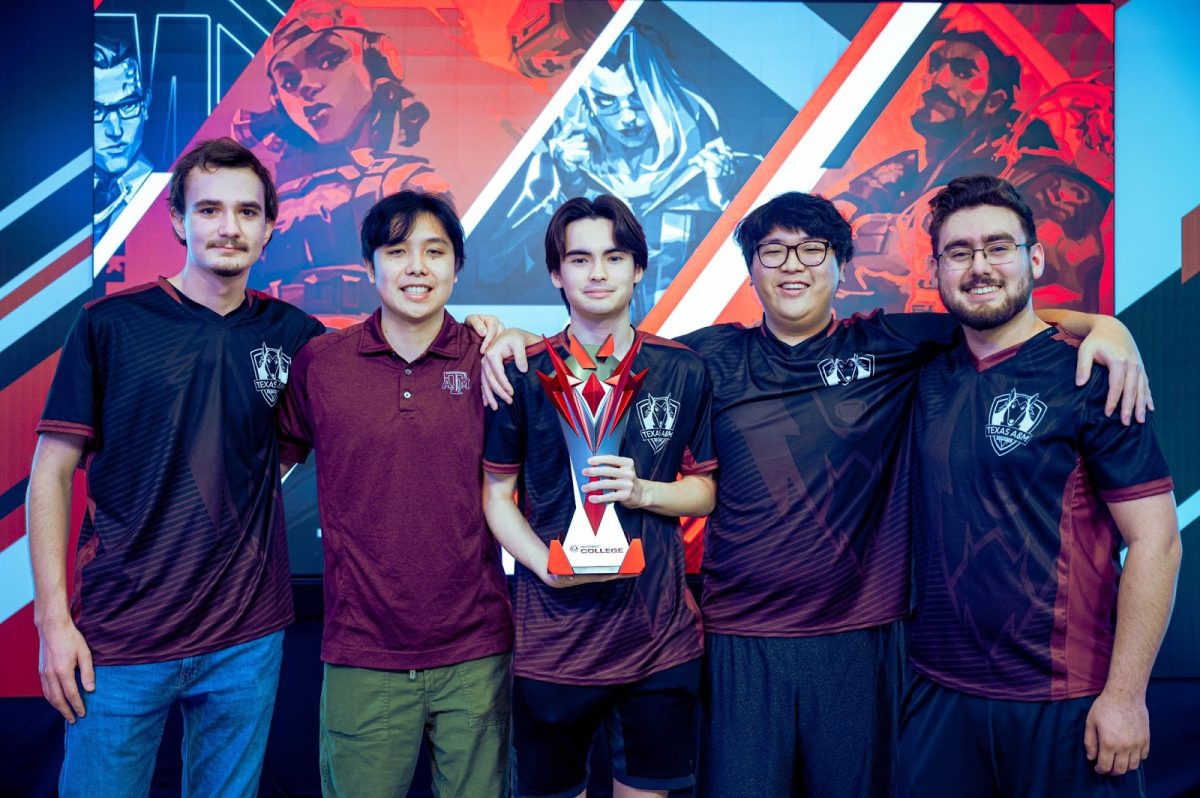Nicholas Salter, Class of 2021, said as a senior African American in the Corps of Cadets at Texas A&M, he was used to hearing racist jokes from his white peers. The jokes were often based on stereotypes, such as assuming Salter likes fried food or saying he “acts white.”
“They take a stab at who I am as a person by taking a look at my skin color…instead of talking to me first,” Salter said.
A&M’s history of racism dates back to its significant figures, many of whom were former Confederate soldiers and Klansmen, evidenced by records and archives in the Cushing Memorial Library. The persisting prejudice has prompted the university to fund programs such as the Green Dot Bystander Intervention Training Program, which trains participants to stop acts of power-based violence when witnessed. A&M also provides affinity groups where students of color can meet, like the Carter G. Woodson Black Awareness Committee, in response to racism on campus.
Salter is one of 2,380 Black students at A&M. Demographic data shows Black students are 3.3 percent of the total student body, according to A&M’s Office for Diversity. White students make up 54.5 percent of the student population, with Hispanic students at 22.5 percent and Asian students at 8.8 percent. In the Corps, the largest student organization on campus, African American students make up 2 percent of the population, according to a 2015 article in the Austin American-Statesman.
As one of only 50 African American cadets, industrial engineering senior Chloe Edison said she is still mistaken for other Black cadets – by her white leaders – whom she looks nothing like.
“They’ll try to justify it, make jokes and excuses that ‘all Black people look alike,’” Edison said.
The majority white environment of the Corps, combined with the strict leadership hierarchy and the cultural value of stoicism, make reporting incidents of racism difficult, Edison said.
“It feels like you can’t go to anyone to complain about it because they’re either going to ignore you, dismiss it or tell you that you’re being too sensitive,” Edison said.
Rank doesn’t insulate cadet leaders of color from racist attitudes, Brandon Dalton, Class of 2021, said. As an African American commanding officer of an outfit in the Aggie Band, Dalton said during leader meetings, his comments are seen as less valid. Some students also assume he has certain political and social leanings, he said.
“They see me as just a color until they get to know me,” Dalton said.
A&M has a well-documented history of racism. Significant university figures such as Lawrence Sullivan Ross, John Garland James and Hardaway Hunt Dinwiddie were Confederate soldiers, according to the book “Second Five Administrators of Texas A&M” by David Brooks Cofer. Early 20th century A&M yearbooks contain photos of students in Ku Klux Klan robes and blackface. The Klan had a strong, documented presence at A&M as multiple faculty members identified as Klansmen. Klan rallies were promoted at football games and students formed the Kream and Kow Klub, an organization that copied the Ku Klux Klan.
The racism of the past that still lingers today at A&M is the target of Denise Crisafi and the campus-wide Green Dot program. As health promotion coordinator for the Office of the Dean of Student Life, Crisafi is fighting racism by training individuals to counteract bystander syndrome.
Bystander syndrome is a bystander’s inaction in a high-risk situation due to their assumption that someone else will stop it. Crisafi oversees the Green Dot Bystander Intervention Training Program, which teaches participants to directly intervene in an emergency situation, delegate someone else to intervene or distract the aggressor. While women are mostly the victims of power-based violence, Crisafi said gender is not the only factor in determining risk.
“Rates of power-based violence are highest among women who identify as Black or African American and women who identify as Native American,” Crisafi said.
Green Dot training tends to focus on those individuals, Crisafi said. For reporting or more resources on power-based violence, she encourages students to visit tx.ag/StandUpTIC.
In the classroom, Leroy Dorsey, associate dean for Inclusive Excellence and Strategic Initiatives, said he exposes bias by teaching his students how minority groups are portrayed in popular culture. He said he incorporates news stories into his lectures, including the media portrayal of Asian Americans shortly after the March Atlanta shootings. Later that day of the lecture, Dorsey said a student emailed and thanked him for addressing the shooting.
“How do you make inclusion real for a lot of different students?” posed Dorsey, who said he encourages other faculty members to ask themselves the same question. “You need to think of ‘How do I ensure that they see themselves in what I’m teaching?’”
For students of color, Edison recommended joining affinity groups. Edison is a member of the Woodson G. Carter Black Awareness Committee and the Texas A&M chapter of the NAACP.
“I really appreciate them,” Edison said. “They make me feel less alone.”
Within the Corps of Cadets, Salter suggested cultural awareness education with the inclusion of Black speakers could be incorporated into training times to expand inclusion and anti-racism.
“Being able to branch out of what you know already and to be exposed to different cultures and be exposed to different kinds of people I think could help out a lot,” Salter said.
The Corps media relations office was asked to comment, but declined.
Dalton drew on the Corps of Cadets motto “Per Unitatem Vis,” Latin for “Through Unity, Strength,” and said the A&M core value of respect should be emphasized among cadets.
“I think the best way to combat it is to emphasize unity in the Corps as a whole,” Dalton said. “The process of getting better starts with the Corps as a whole and then working our way down.”
‘They see me as just a color’
July 12, 2021
Photo by Photo by Angelina Alcantar
African American members of the Corps of Cadets account for only two percent of the organizations demographic.
Donate to The Battalion
Your donation will support the student journalists of Texas A&M University - College Station. Your contribution will allow us to purchase equipment and cover our annual website hosting costs.





















